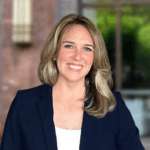
Discharge planners, nurses, medical office staff, and healthcare workers have endured more than a decade of being apped and use-cased to death. Each new technology promised to revolutionize their workflows and create efficiencies but, instead, created a multitude of disparate work streams based on siloed systems with which to contend. This has bred industry-wide “innovation fatigue” where many people have stopped using new technologies altogether and refuse to use new ones, if they can help it.
The digital health sector sees hundreds of new products and platforms launched globally each year. Unfortunately, the promises of healthcare innovation remain unfulfilled because many technology companies ignore the realities of how most healthcare actually gets delivered — piecemealed, on paper, with an overreliance on fax and phone. It’s these messy processes that must be understood and addressed to enable any real change. It’s not the flashiest technologies or rapid-speed AI breakthroughs that can do it. It’s the technologies laser-focused on the unglamorous but all-consuming coordination problems that suck up medical staff’s time, stress them out, and compromise patient care.
Keeping actual healthcare workers top of mind

NEMT Partner Guide: Why Payers and Providers Should Choose MediDrive’s TMS
Alan Murray on improving access for medical transportation.
For too long, innovation has been optimized to impress hospital executives, but it’s time to solve for the daily problems of independent physicians, behavioral health providers, skilled nursing facilities (SNFs), and all the other members in the care continuum who are often forgotten in integrations. Digital health investments that don’t put these people first often create more burden for medical staff and worse outcomes for their patients.
Innovation is a wonderful thing, but when it fails, it’s often because of a lack of understanding of the worker and the true realities of the healthcare ecosystem. Many tech companies have skipped this crucial (and often time-consuming) step in their development rush, leaving care team members to navigate a highly fragmented system where information rarely follows the patient and their phones and workstations are running amok with apps and dashboards.
Too rosy a picture of technological capabilities
One place where innovation falls short in solving problems is understanding that not everyone has robust electronic medical record (EMR) systems with interface capabilities. Many specialists, home health agencies, SNFs, and other post-acute providers still rely on paper-based records propped up by fax and phone. These outdated methods do not mesh well with practice-management software or EMR systems of the world. Hospitals can deploy the most sophisticated predictive analytics with the most advanced clinical decision support there is on an EMR, but if the home health agency receiving a patient operates with paper only, the carefully crafted care plan easily falls apart.
As well, most doctors are familiar with the uphill task of medication reconciliation for seniors who carry paper lists in their wallets with their prescriptions and health histories. Another dashboard or analytics platform won’t help that doctor or nurse. Globally, the cost associated with medication errors is estimated to be $42 billion annually, and they are a leading cause of adverse outcomes. It’s common that care coordination breaks down outside the hospital walls, partly causing the errors.
Rural healthcare providers do not have even close to the infrastructure of major hospital systems or the IT support behind them. Yet, innovators keep building and selling solutions as if every provider is the Mayo Clinic, flush with integration budgets and IT staff.
There must be another way
Technological chaos helps no one and is the entrenched reason that fax and phone still reign supreme. While flashy demos and the promise of AI are impressive, the underlying need for basic coordination in a patient’s care journey is still the paramount issue. Good healthcare requires seamless coordination and a patient-first mission, and when you pass information to someone who lacks the tools to act on it, everyone suffers.
Innovation is critical, but so is “Where is the patient after the recent hospital visit? What is their updated phone number to reach them for follow-up? Did follow-up even happen?” These are some of the biggest issues (yet may seem the most basic), and AI and other vibrant new technologies won’t solve them. AI holds great promise for diagnostics and the ability to reduce treatment costs by up to 50 percent, but it can’t get seniors a ride to their dialysis appointments.
Diving into real-world operations is key
Healthcare technologies and adoption don’t fail because medical staff are not trying to use them; they die in the handoff between the practice and everyone else caring for the patients. Stark reality always beats technology aspirations, and healthcare workers want solutions that solve for the messy, real-world nature of healthcare that they work in every day.
The industry as a whole must solve for the 24/7 fundamental problems with which every healthcare worker deals but few innovators address. From the most rural clinics to the biggest hospital systems, we must prioritize healthcare workers’ true workflows, their lack of time, unhelpful technologies, and crisis-level staffing constraints, and their subsequent wise workarounds with equal importance and reverence.
Photo: ipopba, Getty Images
Effie Carlson is the CEO of Watershed Health. She brings more than 16 years of experience in healthcare leadership, policy, strategy, and business development across the provider and payer sectors, and her experience spans managed care, healthcare technology, government relations, and value-based care. Carlson founded EJC Consulting Group and has served in executive leadership positions at Modivcare, PayrHealth, Team Select, and CareCentrix. Carlson is an active advisor and board member for healthcare organizations, including the Texas e-Health Alliance, SendaRide, and the Non-Emergency Medical Transportation Accreditation Commission (NEMTAC).
This post appears through the MedCity Influencers program. Anyone can publish their perspective on business and innovation in healthcare on MedCity News through MedCity Influencers. Click here to find out how.









